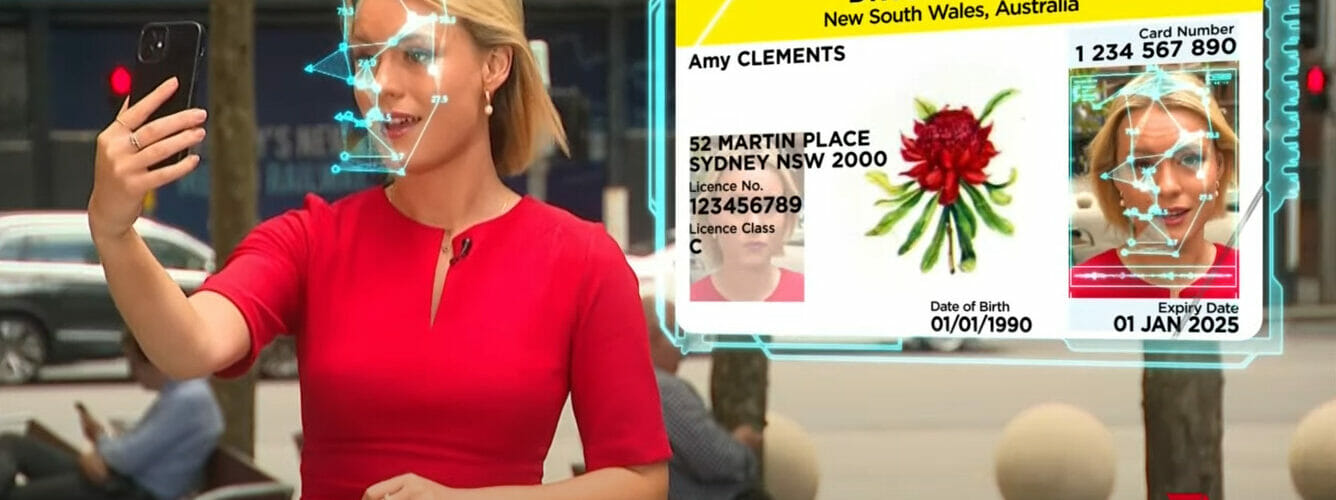The WinePress reported on the first glimpses of NSW’s digital ID in March of this year. SEE: New South Wales Australia Set To Launch All-In-One Digital ID To Fully Replace Physical Documents And Requires Facial Recognition
Biometric Update provides more updates on what the academics determined:
A new report from Australian researchers proposes guardrails for New South Wales’ digital ID system and notes the need to build public trust when using biometric facial verification tools and liveness detection.
The report is written by Professor Edward Santow, Sophie Farthing and Lauren Perry of the Human Technology Institute (HTI) at University of Technology Sydney (UTS), and backed by the James Martin Institute for Public Policy. In a release, Santow says that the NSW government’s digital ID initiative, which combines selfie verification and liveness detection through the Service NSW app, “is groundbreaking, because it seeks to ‘bake in’ protections that make the system more robust, while simultaneously building public trust.”
Santow is a former Australian Human Rights Commissioner, and in that capacity pushed for more robust regulation of facial recognition as its use in the country increases.
Formally titled “Improving governance and training for the use of facial verification technology in NSW Digital ID,” the HTI report begins with the assertion that “modern life is almost impossible if you cannot prove who you are. Verifying one’s identity,” is says, “is essential for employment, to access government services and to engage with a range of companies. This is unlikely to change.”
With two major bills related to digital identity before Australia’s parliament and the NSW government committed to leading the charge on digital ID, the report engages in the ongoing attempt to balance the necessity of digital identity with the risks and challenges inherent in using facial verification. Citing issues such as the potential for algorithmic bias and the risk of large aggregations of personal data being hacked, the report offers a governance framework containing ten principles to inform legislation and policy for digital ID.
The ten recommendations address the full spectrum of rollout, from establishing digital ID as law to making it secure, universally available and subject to robust independent and internal monitoring and oversight. Consent and timely access to correction and redress are listed as key considerations, as is a high standard for accuracy and regulatory compliance. The HTI says the system should be designed with interoperability in mind, and that public communication prior to rollout should be clear and comprehensive.

Point number two is perhaps the most succinct in summing up the overall objective: “NSW Digital ID should protect and promote the privacy and data security of all users.”
Professor Santow says that biometric facial verification and facial analysis for liveness “can pose risks for human rights, such as privacy and non-discrimination, and these risks need to be well managed through good system design, strong legal protections and effective training.”
To this end, the report also includes a digital training strategy for Service NSW, to ensure that staff at all levels “understand the risks, responsibilities and appropriate responses to issues likely to arise in respect of the NSW Digital ID system.”
Despite the NSW government’s all-systems-go messaging, the digital ID project has faced repeated delays and questions about transparency and data security.
AUTHOR COMMENTARY
Last week I reported how it is highly probable that a cyber attack and grid-down scenario will be used as a proxy to coverup a collapsing economy and banking sector, and help to institute digital IDs soon thereafter. SEE: False Flag Cyber Attack In 2024 Likely To Occur, As A Scapegoat For Collapsing Economy And Implementing Digital IDs
The digital ID system is very important for the central bankers and elite class, as it will allow for CBDCs and 24/7/365 monitoring and surveillance of all that we do and buy.
[7] Who goeth a warfare any time at his own charges? who planteth a vineyard, and eateth not of the fruit thereof? or who feedeth a flock, and eateth not of the milk of the flock? [8] Say I these things as a man? or saith not the law the same also? [9] For it is written in the law of Moses, Thou shalt not muzzle the mouth of the ox that treadeth out the corn. Doth God take care for oxen? [10] Or saith he it altogether for our sakes? For our sakes, no doubt, this is written: that he that ploweth should plow in hope; and that he that thresheth in hope should be partaker of his hope. (1 Corinthians 9:7-10).
The WinePress needs your support! If God has laid it on your heart to want to contribute, please prayerfully consider donating to this ministry. If you cannot gift a monetary donation, then please donate your fervent prayers to keep this ministry going! Thank you and may God bless you.








Jacob, what are you going to do? Are we supposed to allow this facial ID for Christians? Do we go along with it? If we don’t we won’t be able to make any transactions in the world. It would certainly be wonderful to get out of here before all of this comes about and we have to make decisions. on how much of it we will agree to in our lives. I don’t think it will be a sin to do the facial recognition, but it will allow them to track our every move, which seems to be quite boring to know what I’m doing at all times.